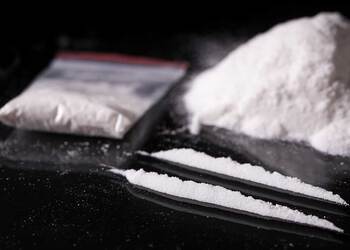Pablo Escobar and his Medellín Cartel transformed the cocaine trade during their heyday in the 1980s. But the 30 years since the kingpin’s death have shown that the business remains one of the world’s most dynamic criminal economies.
Escobar was killed by a specially assigned police unit on December 2, 1993. His death marked the start of a new era in the global drug trade. Over the next three decades, drug trafficking organizations run from the top down by powerful, high-profile capos gave way to dispersed networks connected by “invisible” middlemen who tend to avoid the limelight.
The cocaine business has also expanded. The United States remains the world’s major consumer of the drug, but huge new markets have sprung up in Europe and Asia, spurring the emergence of new trafficking networks to feed that demand.
In response, the supply has also seen unstoppable growth. Cocaine production in Colombia and neighboring Andean countries has reached historic highs in recent years, and criminal groups have even begun experimenting with growing crops outside their native region.
1. The Fall of the Cartels and the Rise of the ‘Invisibles’
In Escobar’s time, much of cocaine production and trafficking was controlled by cartels led by larger-than-life figures. In the years following his death, these hierarchical organizations and big personalities have disappeared.
Traffickers have learned that it is far more profitable to keep a low profile, leading to the rise of what InSight Crime has dubbed the “Invisibles.” Among some of the most prolific of the Invisibles to be unmasked are Guillermo León Acevedo Giraldo, alias “Memo Fantasma,” and Luis Agustín Caicedo Velandia, alias “Don Lucho.”
At the same time, the cocaine market has come to be dominated by looser, more fragmented networks that specialize in certain steps of the process. And the Gaitanistas — also known as the Gaitanista Self-Defense Forces of Colombia (Autodefensas Gaitanistas de Colombia – AGC), the Urabeños, or the Gulf Clan — one of the main criminal groups in Colombia, are a case in point.
The AGC is the result of a criminal evolution that began with the Medellín Cartel and continued with the paramilitary United Self-Defense Forces of Colombia (Autodefensas Unidas de Colombia – AUC). Both organizations failed to recover from the death of their leaders or their internal divisions.
The AGC learned from those failures, and from the beginning, it was conceived as a network. This has allowed the group to adapt to the deaths and captures of its main leaders, without affecting its participation in the different nodes in the cocaine market.
2. Cocaine Trade Goes Global
When Escobar’s Medellín Cartel was at the peak of its power, most of the profits from the cocaine trade came from the voracious appetite for the drug in the United States.
Though the United States still accounts for a major share of global cocaine consumption, expanding European markets have become increasingly important in recent years. The drug fetches high prices across the Atlantic, and criminal groups in Latin American and the Caribbean have built trafficking relationships with a range of European partners. Italy’s ‘Ndrangheta, Dutch-Moroccan mafias, Albanian networks, and others now maintain upstream trafficking relationships that increase their profits by bringing them closer to the product’s source.
SEE ALSO: The Cocaine Pipeline to Europe
Cocaine produced in South America has also begun to flow in significant quantities through new regions. Nigerian networks have emerged as key players in trafficking to and through Africa. In the Middle East, cocaine now moves through Turkey, Israel, and other countries. Several Asian markets also appear poised for growth. Cocaine prices in Australia and New Zealand are among the highest in the world. Large, recent seizures of the drug in Asian major transportation hubs like Hong Kong suggest traffickers are seeking to meet that demand.
3. Production Increases and Expands
Over the past 30 years, coca cultivation has continued to expand, increasing the potential production of cocaine to record highs.
Despite numerous initiatives over the last three decades, including forced eradication, aerial fumigation, and crop substitution programs, Colombia remains the world’s main producer of cocaine. Since 1999, when the government began to measure coca crops in the country, the number of hectares has continued to rise, reaching a historic 230,000 hectares in 2022. Increased areas of coca cultivation, coupled with advances in technology that generate higher crop yields and more sophisticated methods of refining coca base into cocaine, has led to steady growth of the country’s potential cocaine production since 2013, according to United Nations figures. In 2022, the country’s production potential reached 1,738 tons per year, the highest in history.

Cocaine production has also expanded in other countries. In Perú, where coca crops also reached a record high of 95,008 hectares in 2022, crops are moving away from consolidated production enclaves and into new areas along the country’s borders, like Indigenous territories and protected areas. And coca cultivation has spread to countries that were previously not producers, like Honduras, Guatemala, and Venezuela.

